The term “jute” refers to the bast fibres of several species of Indian Corchorus, which belong to the linden family. Stalk length or fibre length is approx. 1.50 to over 3 m. The outer appearance resembles an enormous weed. Following the harvest, jute fibres are roasted for 20 days, then podded by hand, washed in running water and then dried. Jute fibres are completely biodegradable and have a silky and golden sheen (that is why jute is often called the “golden fibre”). They can also be distinguished by their high tear-resistance and elasticity. A distinction is made between white and Tossa jute. Tossa jute is somewhat firmer and yellow-reddish in colour due to the stronger lignification. Jute is mostly cultivated in the Ganges Delta where there are optimal conditions for growth due to annual flooding, and can be cultivated virtually without any fertiliser and plant protection.
Jute was initially known as a vegetable for cooking and as a multi-purpose fibre for domestic farming in the Asian region. The stalk rind of these plants was successfully processed for the first time in the Scottish city of Dundee during the first half of the 19th Century. This led to jute gaining worldwide recognition as a fibre supplier. In addition to cotton, it continues to be the most important natural fibre to this day. It is used to make one of the oldest traditional packaging materials, since it has the optimum properties for packaging raw products and at the same time is extremely environmentally friendly. Today, approx. 12 million small holders worldwide make a living from cultivating Corchorus plants, from which jute is extracted.
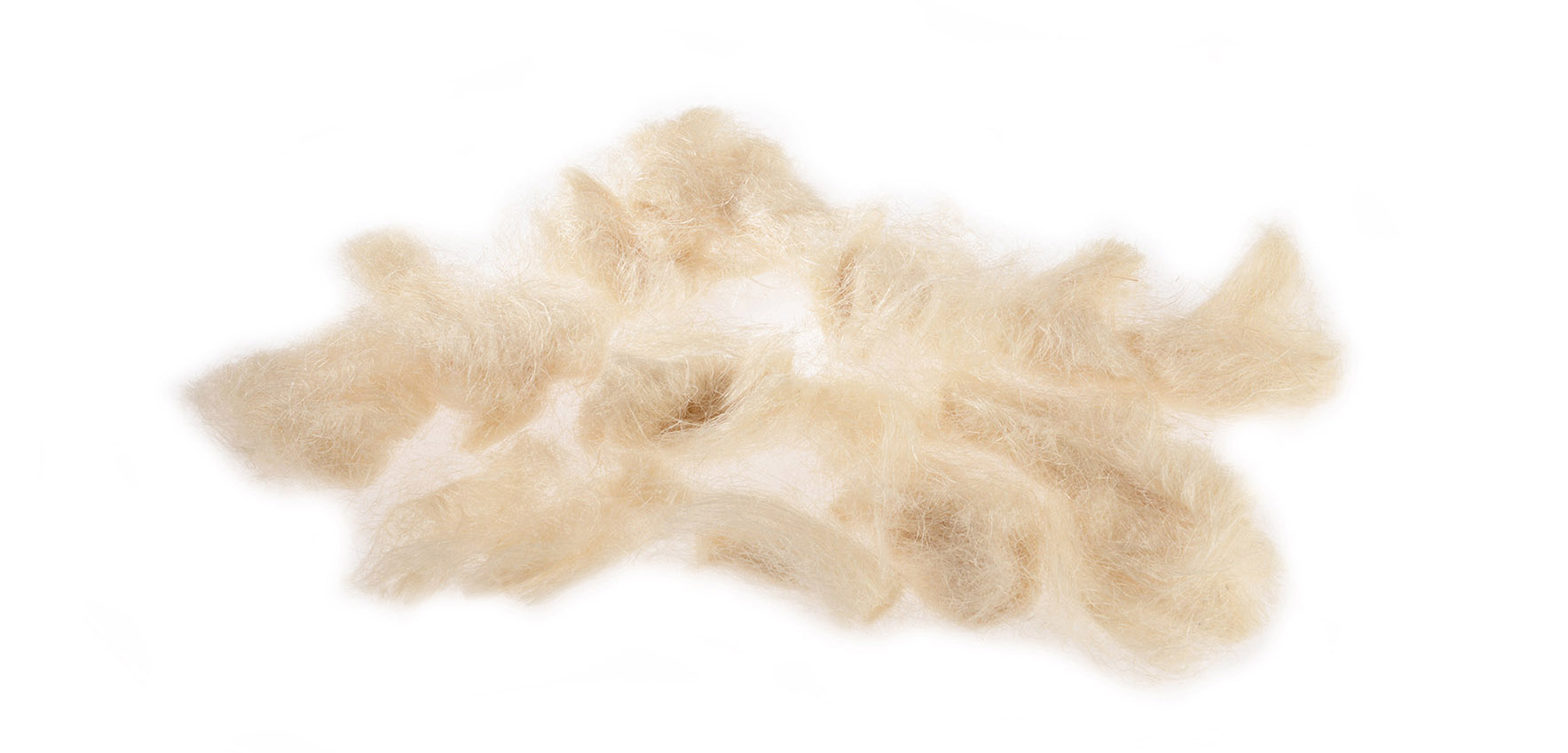
JUTE YARNS AND TWINES
Jute yarns are used both in industry (shoes, carpet, crafts) as well as in gardening and landscaping (e.g. as baler twines). They are available in a wide range of thicknesses, types (e.g. dyed, bleached, polished, odourless) and packaging (spool sizes). You can find jute yarn/twine as parcel string (packaging material), in craft supplies (macramé) or as household yarn in construction markets.
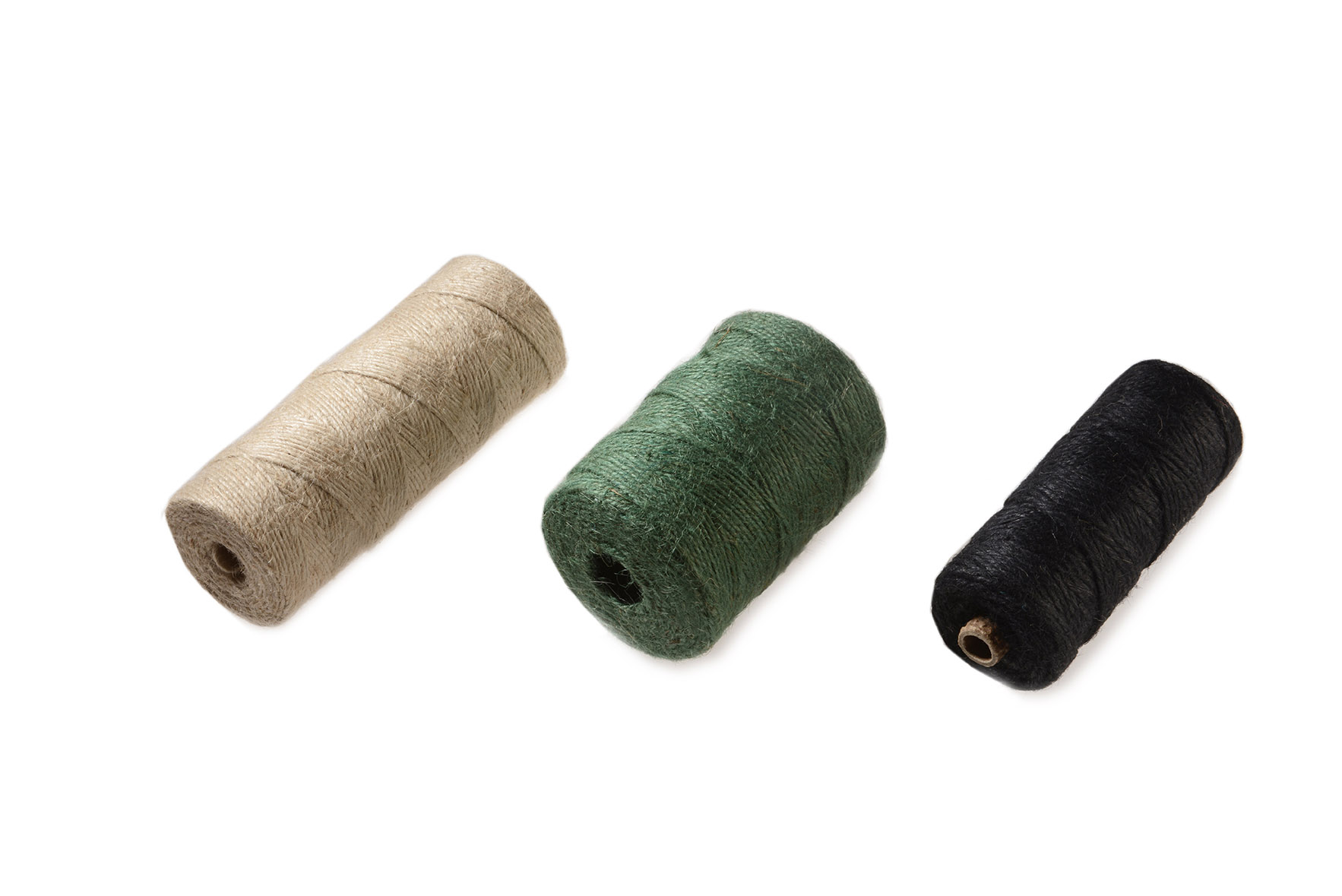
JUTE SACKS
Jute sacks/bags are an excellent packaging material, primarily for food such as rice, potatoes and different types of vegetables, but also for coffee and cocoa. Due to the good ventilation, distinct moisture absorption and a solid structure making it impossible to damage the packaged products, this recyclable packaging type continues to be in frequent use.
Of course, jute sacks/bags are also available in a variety of sizes, weights, qualities and designs (with/without binding tie). In addition to its use in the food sector, jute sacks/bags are also traditionally used as packaging material for the most varied products such as brown coal, for example. Even the traditional sandbag, which is used in the event of strong rainfall or flooding, in order to strengthen dams and/or for bank protection, is still highly sought after in spite of the competition from PE or PP sacks. The German Federal Armed Forces (Bundeswehr), fire brigades and the German Federal Agency for Technical Relief (Technisches Hilfswerk) all use these jute sandbags as a flood barrier.
During the last few years, an increasing number of small jute sacks/bags have been used as decorative packaging for wine bottles or sweets (especially during the Christmas season).
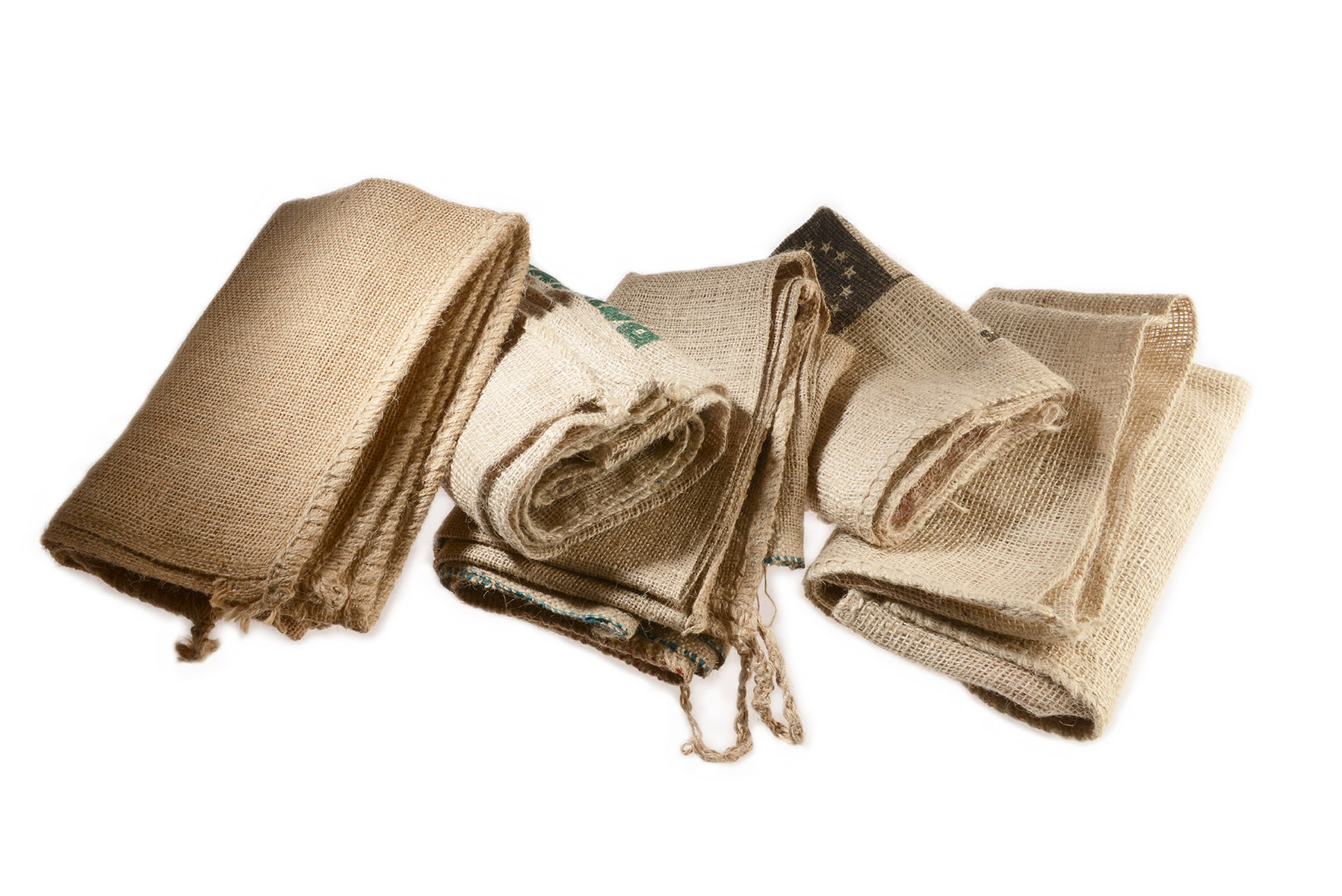
HESSIAN FABRIC
Hessian is the name for a single thread fabric made from jute. Hessian is provided in a range of widths and grammages and is used in a wide range of applications. Both the packaging as well as the decoration industry use Hessian fabrics – in natural colours, as well as dyed. Dyed Hessian fabrics are very popular as a decoration material, especially during festive periods. It goes without saying that a fabric used for decorative material has to be free of any weaving flaws, bulges or other. It is possible to purchase fabric that has been treated in a variety of ways, such as PE coating, suitable for use with food, anti-rot protection and much more.
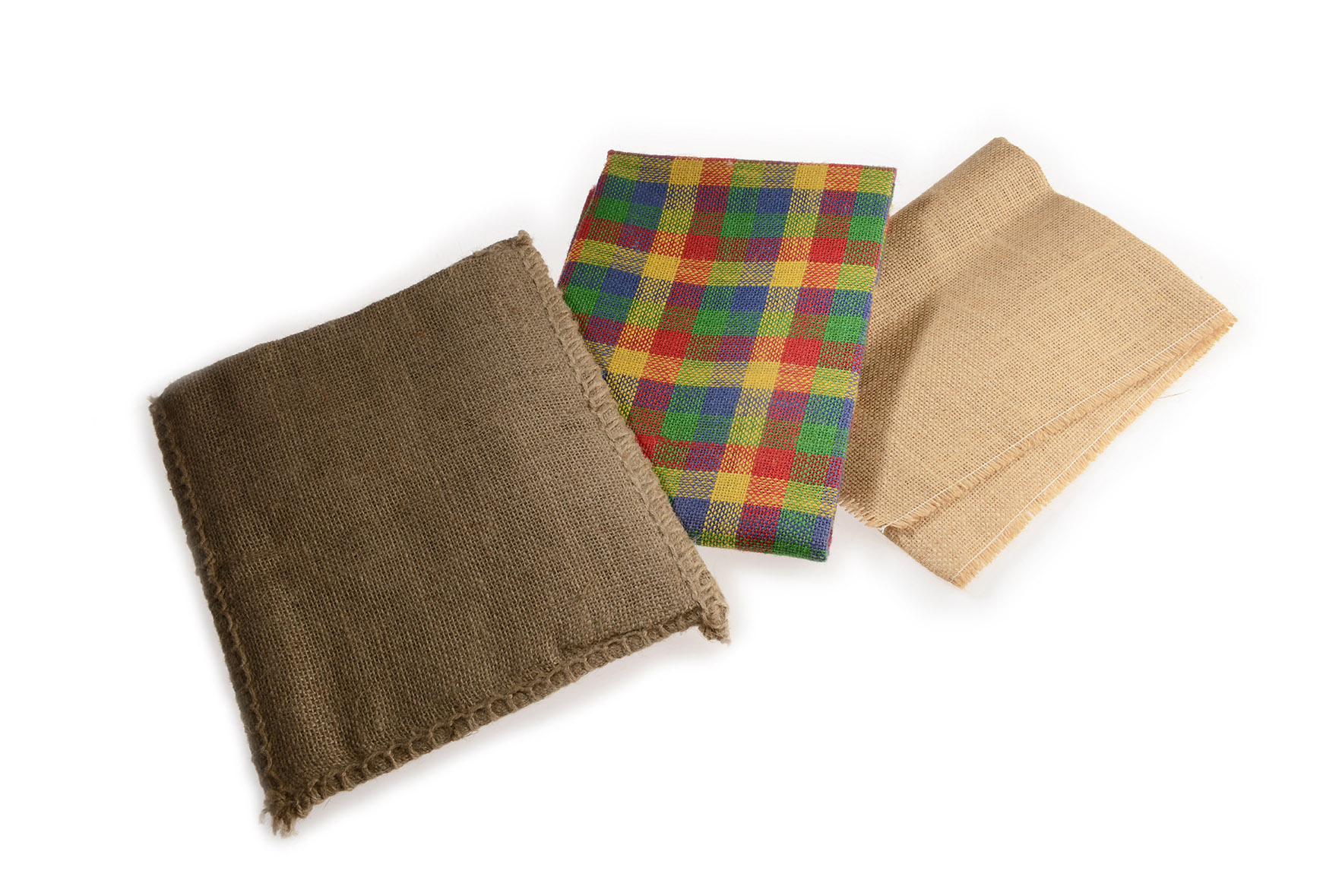
FABRIC BACKING FOR CARPETS
Fabric backing for carpets made from jute, also referred to as CBC (Carpet Backing Cloth), is characterised by its high load-bearing capacity and flexibility. The use of jute in carpet production is not only advantageous for the environment, as it makes the end product sustainable, biodegradable and recyclable. A jute carpet backing also facilitates the laying of carpets even in spatially demanding environments, thanks to its flexibility.
TARPAULIN FABRIC
Tarpaulin is a double thread fabric made from jute and is very tear-resistant. Based on this property, its uses include the upholstery and saddlery sectors as well as road construction. In principle, it is suitable for all hard/robust areas of application.
JUTE WEBBING
Webbing/jute belts are narrow strips of jute fabric. They are primarily used for seat and back upholstery, e.g. in the furniture industry for armchairs, chairs and/or sofas or couch suites. The stronger the yarns and the higher the thread density, the more hardwearing the end product will be.
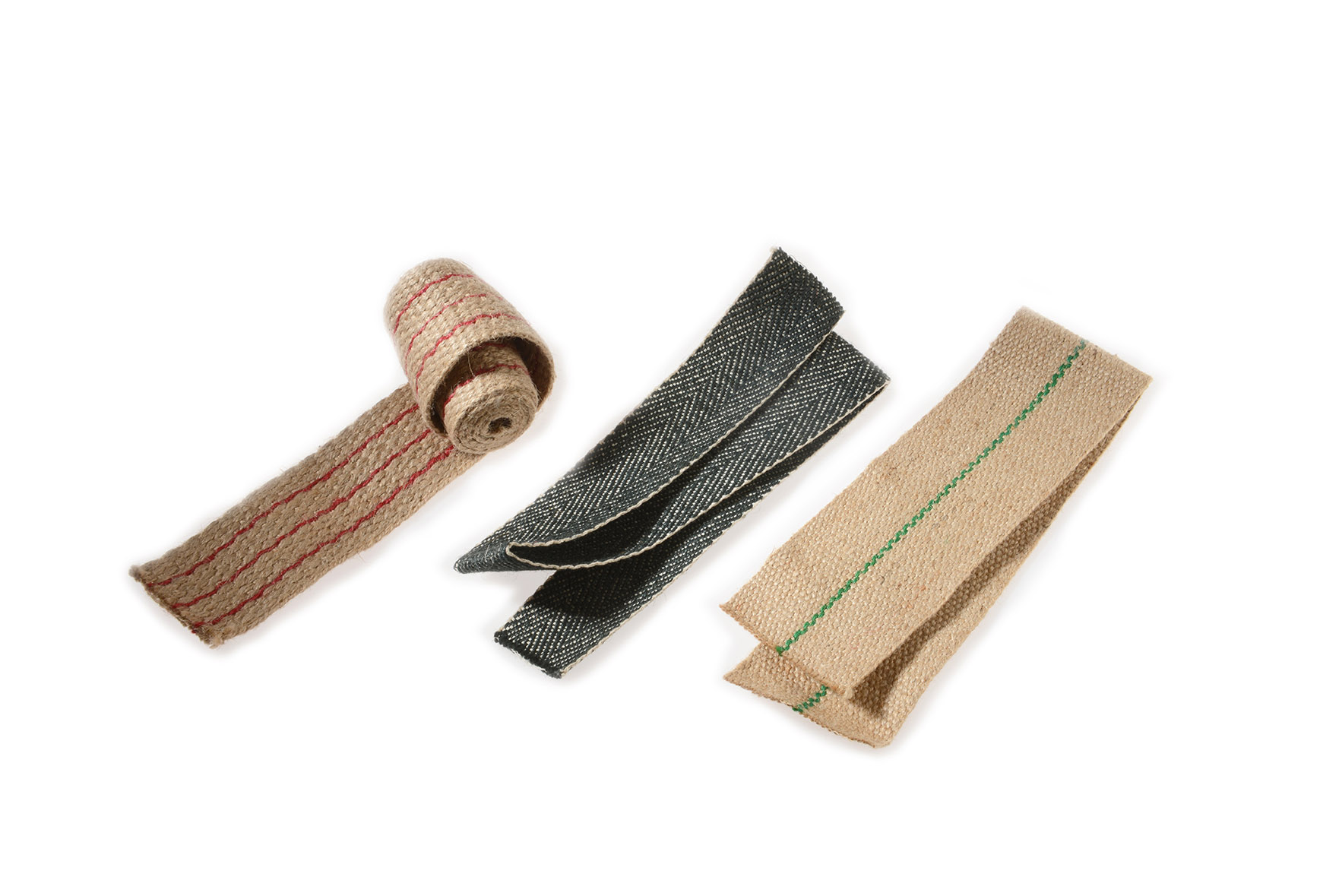
JUTE FLEECE
So-called needle felt made from jute is often used as insulating material, but also as noise and impact protection. These needle felts are available in a range of widths, grammages, thicknesses and compositions. It is also possible to mix jute and other products.
Jute fleece is used to produce, among others, so-called mulching discs, which are round discs made of densely needled jute felt that have a slit to enable easy opening and attaching to plants and trees. These types of jute mats are intended to protect against cold, frost and moisture. Furthermore, they inhibit the growth of weeds and keep the ground moist. Earthworms and other microorganisms transport the mulch material to deeper ground layers and transform it into plant food.
Accordingly, tree nurseries and other agricultural operations mostly use these products. Of course, mulching discs can also be applied as decorative underlays or for handicrafts in the house and garden.
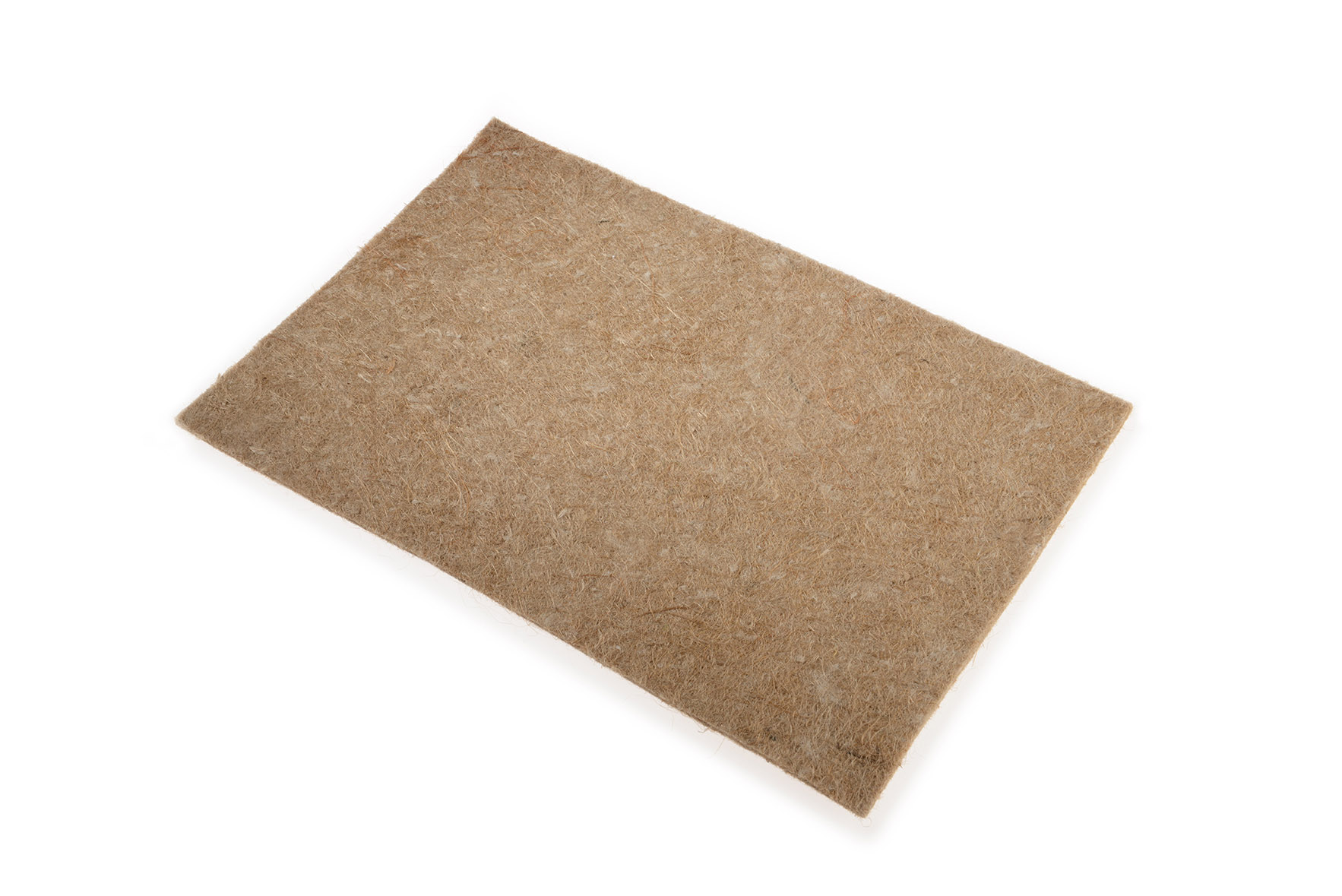
JUTE CORDAGE
Jute cordage is traditionally used in seafaring. Nowadays, however, cordage for shipping is made from other materials such as PP, PE or similar for the most part. The steel cable industry however continues to rely on natural fibre cordage made from jute or sisal. The natural fibre cordage acts as a cable core and its hygroscopic property ensures automatic re-greasing/re-oiling of the steel cables. What is more, jute cordage is often purchased by companies in the decorating or the furniture industry.
PLASTERER/SCRIM CLOTH
This jute fabric is used to strengthen plasterwork. It is available in a range of dimensions and various thicknesses, hemmed at the ends and lightly rolled.
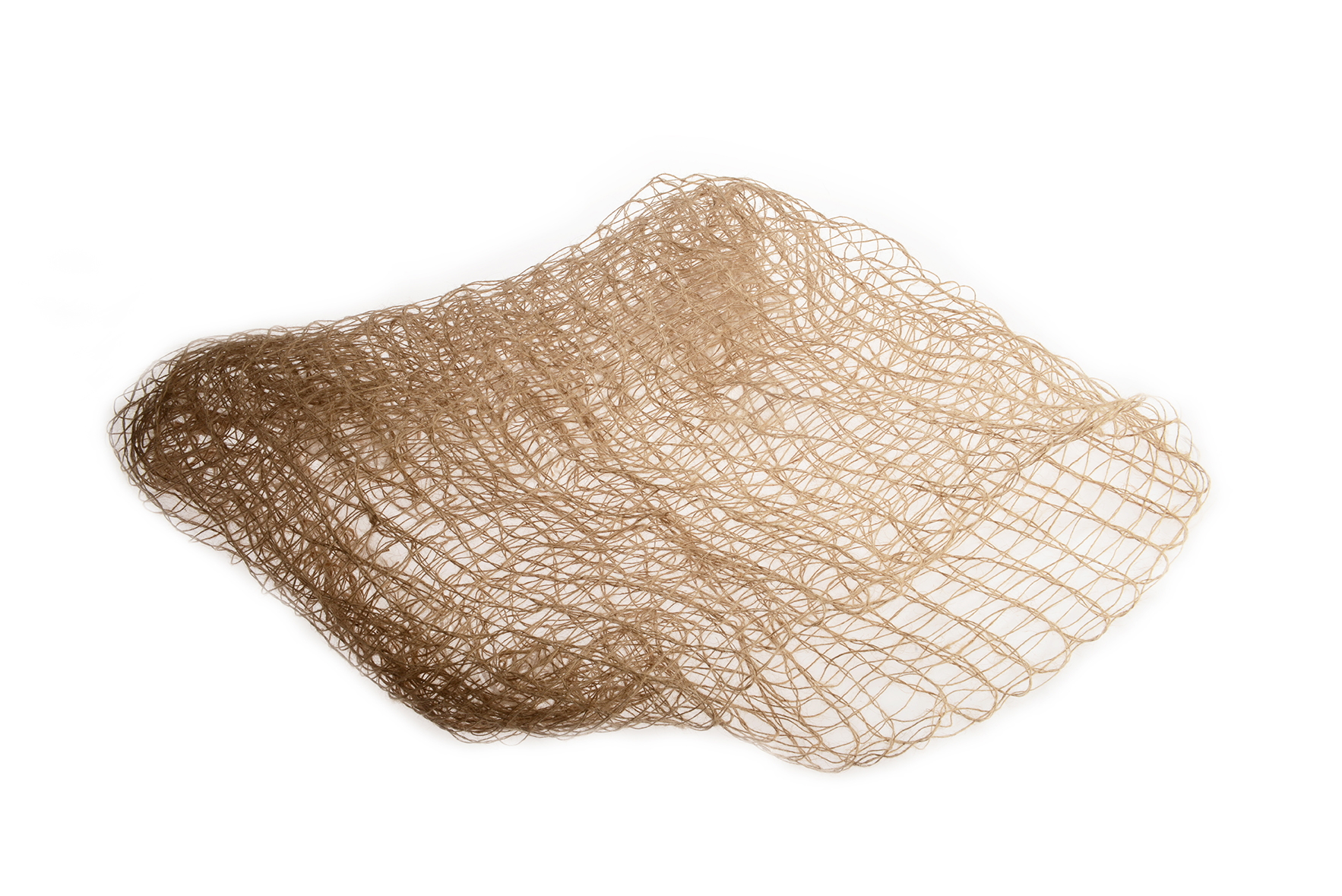
SOIL SAVER/GEOTEXTILES
This term mainly stands for erosion-protection nets and mats of jute, in order to prevent soil erosion and for slope protection or for landscape recultivation. As standard, they are available in widths of 1.22 m and 2.42 m and with a weight of 500 g/m². Some customers also use customised products with a higher or lower weight, individual mesh width or in another width. These so-called geotextiles are primarily employed in road construction, but also in gardening and landscaping. When laid loose, they adapt well to uneven terrain and can absorb up to three times their own weight in moisture. The drenched fabric prevents the plants from drying out and offsets fluctuations in temperature. The mesh structure enables plants to spread and grow unimpeded.
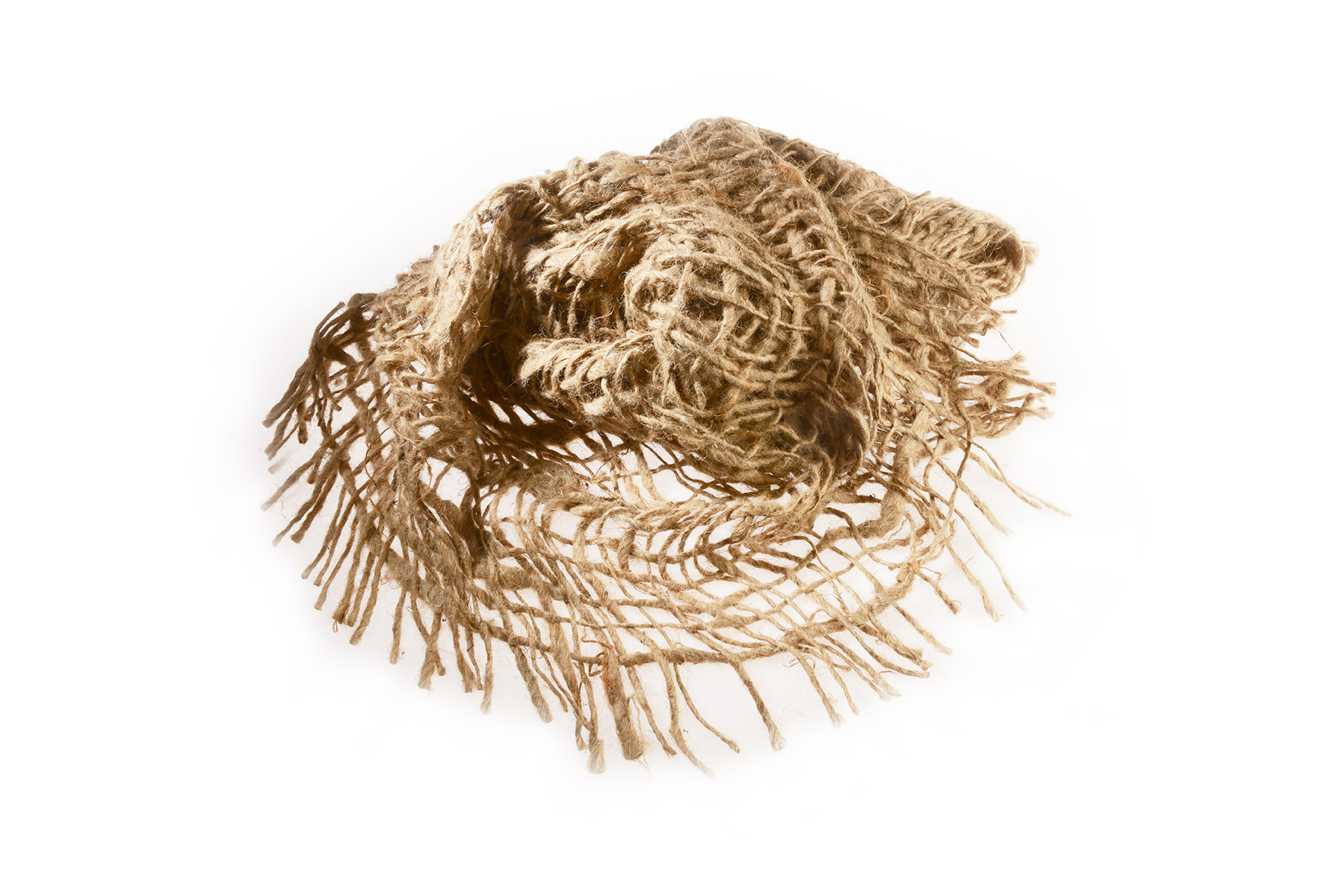
RAW JUTE/JUTE FIBRES
The automotive industry is increasingly relying on so-called composites, which contain natural fibres which makes the end product (usually a pressure plate) lighter. No toxic dust is released during the processing stage and they can be processed in a way that is gentler for the machine; hence, they are energy-saving. The finished component splinters less. The use of natural fibres affords industry the opportunity to produce in a more environmentally friendly way, while also taking the preservation of employees’ health into account.
The building industry uses similar composite materials as insulating material.
Likewise, the pulp and paper industry has for many years been increasingly using cellulose extracted from natural fibres such as jute/kenaf. This is more environmentally friendly. However, the main benefit is that using this natural fibre enables the pulp industry to supply much more versatile forms of cellulose to the paper industry. Its applications include special paper such as greaseproof paper.

JUTE BAGS
Although the bags, often referred to as jute bags (“jute instead of plastic”), are mostly made out of cotton and not jute, there is a steadily growing demand for “genuine” jute bags and a number of suppliers have specialised in manufacturing such bags. It is also common to find bags made out of blended fabric (cotton/jute).
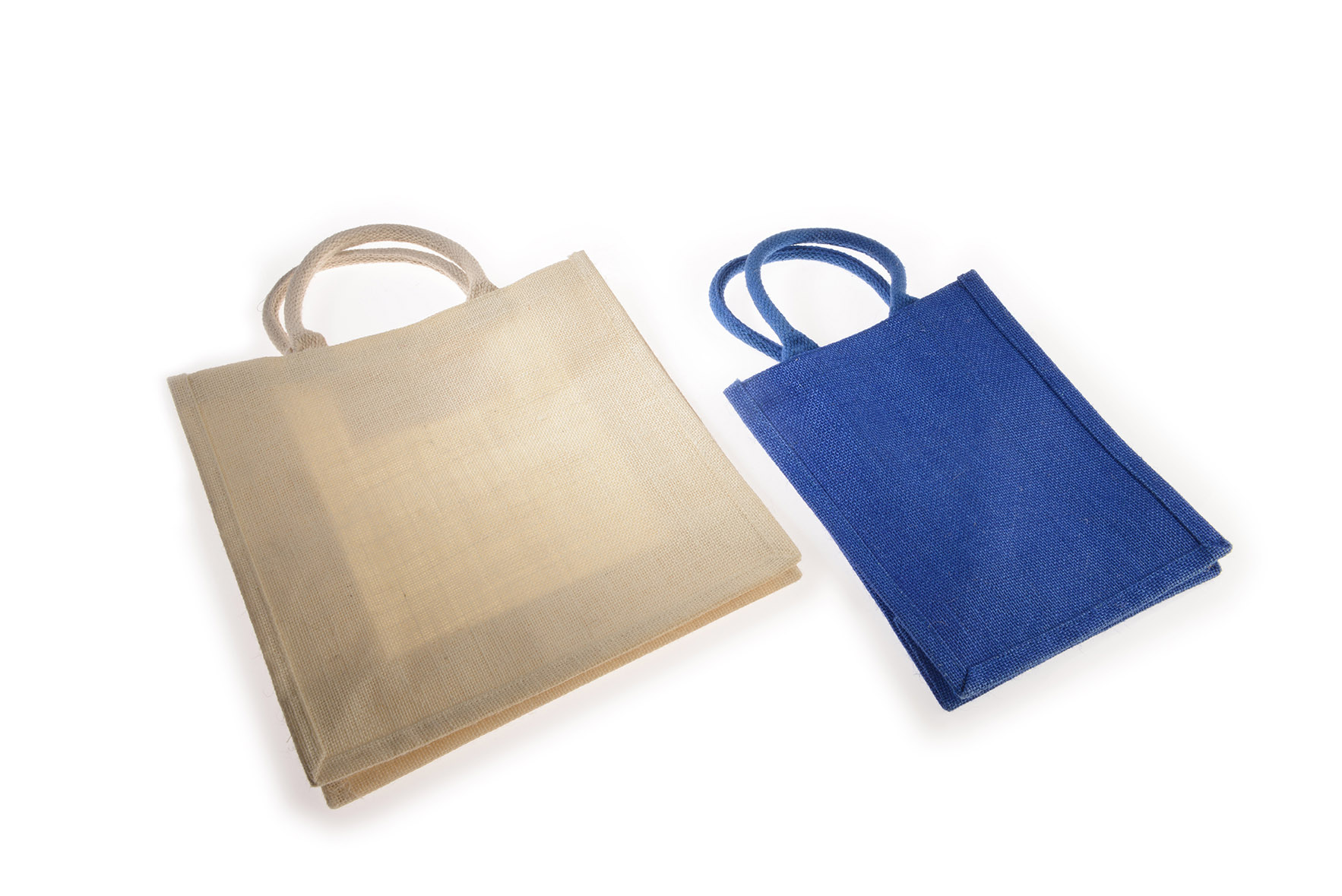
BURLAP FABRIC
So-called nursery squares are jute fabric sections predominantly used in gardening and landscaping, in forestry management as well as in tree nurseries for wrapping around root bales. The fabric decomposes in the ground within a space of approx. three months, without leaving any unwanted residues. Prior to this, it protects bushes, trees and roots against frost and dehydration.